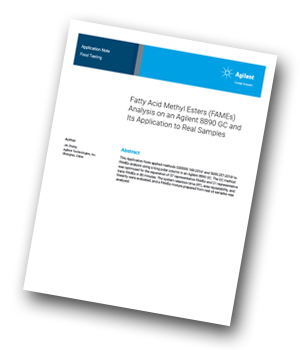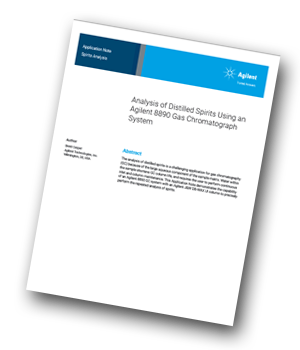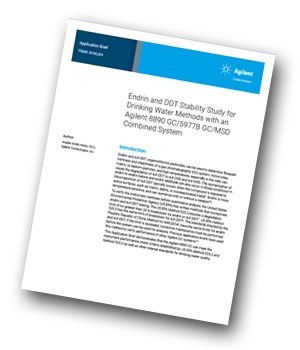Separation Science, in collaboration with Agilent, is offering a selection of application notes demonstrating the versatility of its 8890 gas chromatography (GC) system that enables you to work smarter with autonomous monitoring, remote connectivity, and other time-saving operations. Click below to download the application notes of interest to you.
 Fatty Acid Methyl Esters (FAMEs) Analysis on an Agilent 8890 GC and its Application to Real Samples
Fatty Acid Methyl Esters (FAMEs) Analysis on an Agilent 8890 GC and its Application to Real Samples
This Application Note applied methods GB5009.168-2016 and 5009.257-2016 to FAMEs analysis using a long polar column in an Agilent 8890 GC. The GC method
was optimized for the separation of 37 representative FAMEs and 21 representative trans FAMEs in 80 minutes.
 Analysis of Distilled Spirits Using an Agilent 8890 Gas Chromatography System
Analysis of Distilled Spirits Using an Agilent 8890 Gas Chromatography System
The capability of an Agilent 8890 GC system with an Agilent J&W DB-WAX UI column to precisely perform the repeated analysis of spirits is demonstrated. The workflow involved repeated injections of neat bourbon whiskey. This demonstrated the ability of this system to analyze complex samples with challenging matrices and maintain retention time and area precision.
 Endrin and DDT Stability Study for Drinking Water Methods with an Agilent 8890 GC/5977B GC/MSD Combined System
Endrin and DDT Stability Study for Drinking Water Methods with an Agilent 8890 GC/5977B GC/MSD Combined System
This Application Brief demonstrates that the Agilent 8890 GC can meet the instrument performance check criteria established by US EPA Method 525.2 and
Method 525.3 as well as other internal standards for drinking water quality.


